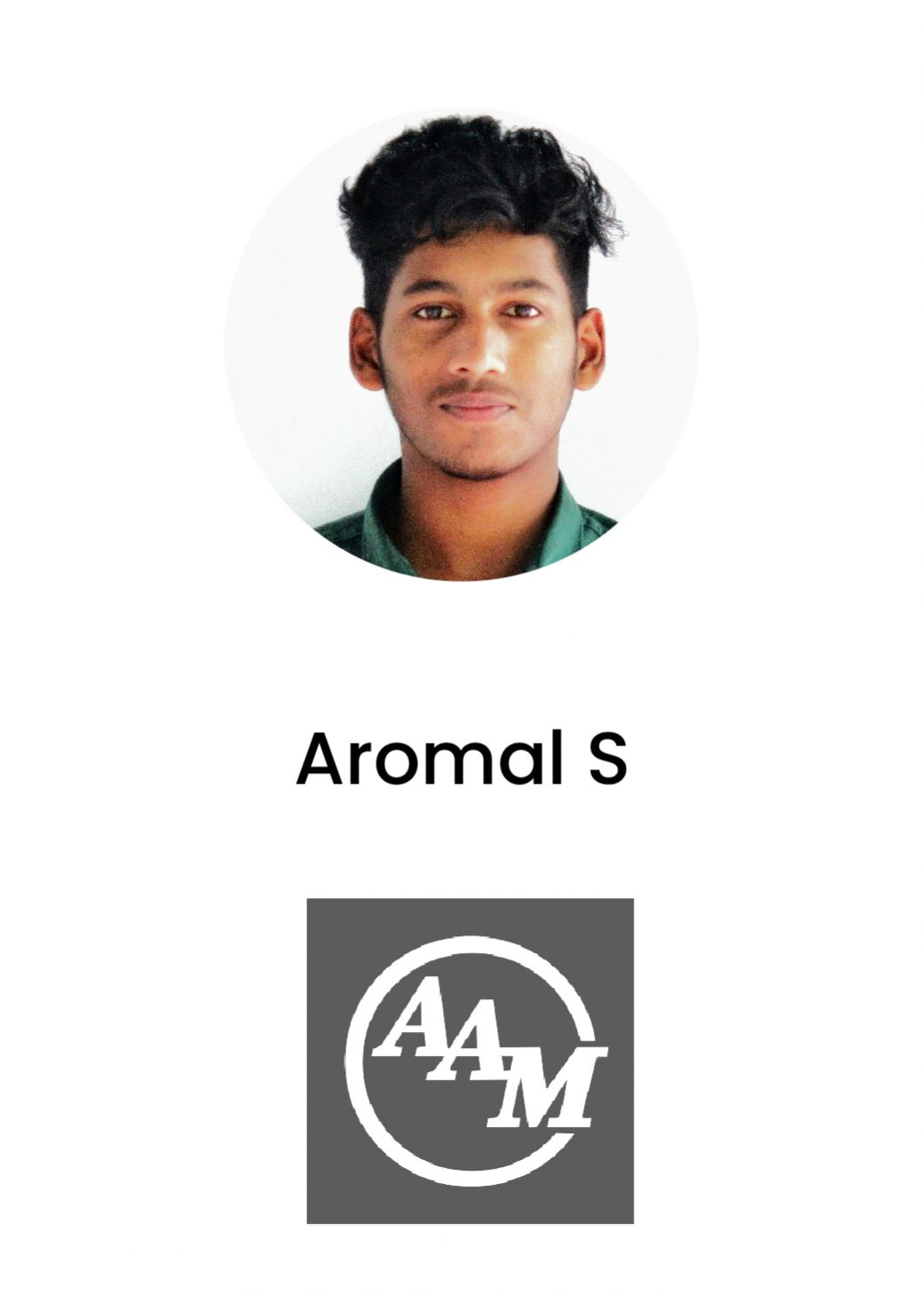B. Tech Collaborative in Electric Vehicle Engineering
A comprehensive EV course that gives you exposure to various computational tools for HEV Applications. This EV technology course is highly recommended for beginners.
Next Cohort Starts: 30th October, 2023
Minimum Eligibility: Students with minimum 50% or equivalent passing marks.







Get Placement In

08 Semester Live + Online Classes
Learn through online lectures delivered by our Top Ranked Faculty (after working hours)

04 Years Hands on learning
Become future ready by applying what you will learn and built industrial projects.

ISIEINDIA Certificate
Earn a Certificate in Electric Vehicle from ISIEINDIA & SRMU - Ranked #1 in Education.

Placement Assistance
You are required to pay the fees to our finance partner after completion of program.
Placement Highlights

350+
Participating Companies

6.9 LPA
Average CTC

30 LPA
Highest CTC

60 %
Average Salary Hike
Top Skills You Will Learn
Selection & Design of Powertrain, Battery, Motor Modelling & Controller, BMS & BTMS, Understanding of Aerodynamics, EV Control Methods, EV Charging and Homologation and Testing
Who Is This Programme For?
Engineering Graduates pursuing BE/B.Tech in Electrical/Electronics/Mechanical/Automobile/Mechatronics.
Job Opportunities
Battery Pack Engineers, Vehicle Dynamics Engineers, CAE Analyst, Homologation Engineers, Quality Engineers, Design Engineers, Project Engineers, Simulation and Testing Engineers, Motor Design Engineers, BMS Application Engineers.
Minimum Eligibility
Bachelor’s Degree with minimum 50% or equivalent passing marks. No technical experience required.
Join the Electric Vehicle industry
By 2026, IDC predicts Electric Vehicle and cognitive computing spending will reach $52.2 billion. Electric Vehicle is one of the hottest professions.

36%
Annual Job Growth By 2026

50 M
Expected New Jobs By 2030

Rs. 3.5L - 12L
Average Annual Salary
Source: IESA Report
Source: IVCA-EY-Induslaw Report
Source: Glassdoor
Still have Questions?
Talk to our Experts…
B. Tech Collaborative in Electric Vehicle Engineering
Certified by ISIEINDIA & SRMU
Complete all the courses successfully to obtain the certification from ISIEINDIA
• Earn a Certification in EV Engineering
• Widely recognized and valued programmed in EV Engineering

Case Studies

EV Operating Cost and Infra Challenges
Perform basic calculations pertaining to various challenges faced by the industry in terms of – cost, charging, battery pack size, etc. to understand the on-ground scenarios. These will be accompanied by market data and studies to give a wider perspective and view into the industry.

Motor Modelling and Design
Modelling of different kinds of the motor on the basis of various parameters such as battery voltage, back electromotive force coefficient, and winding resistance. Comparative study of BLDC motor vs IM motors vs PMSM motors on the basis of its design, performance, efficiency.

EV Charging Station & Road Map Challenges
Comparative study of the charging system i.e. onboard and off-board charging system. The case study focuses on the load requirement and infra challenges faced by the EV industry in all parts of the country.

Battery Pack Thermal Management
Battery pack thermal management strategy and methods used in different vehicles as per the applications. The optimization on the basis of cooling efficiency, of the system, and power management.
ISIEINDIA Instructors
Learn from leading Industry oriented trainer, faculty and leaders
Our Expert Work At
Top companies from all around the world






Where our Alumni Work

Syllabus
Best-in-class content by leading faculty and industry leaders in the form of videos, cases and projects, assignments and live sessions
150+
Content Hours Available
100+
Industry Projects
10+
Case Study
4+
Tools Covered
SEMESTER - 1
History of electric vehicles
Construction of EVs
Construction of Hybrid Vehicle-HEV
Efficiencies Comparison EV Vs. HEV
Prospect and Reality of EV
Motors
Controllers
Introduction to chassis- Types of chassis and their significance
Factor affecting chassis and machining- Ergonomics-
Introduction to Steering system and its Dynamics
Suspension System component
Types of Suspension System
Introduction to Braking System & its dynamics
Tire & its specifications
Vehicle Development Process Overview
Different types of Hybrid vehicle
Hybrid Components and Architectures
Major components in hybrid power train
Power Flow in EV & HEV
HV/LV electrical systems
Introduction to Vehicle safety standards, Rules and Regulations
Standard road map for Hybrid and Electric vehicles.
Environmental impurities and safety requirements
Standards and regulation in India
Automotive safety components certification by various organizations (ARAI, SIAM, SAE, ASME, FMVSS).
Specification & Classification of Vehicles (including M, N and O layout)
Homologation & its Types
Regulation overview (EEC, ECE, FMVSS, AIS, CMVR) type approval Scheme
Homologation for export
Conformity of Production
Various parameters, instruments and types of test tracks
Hardware in Loop (HIL) concept for EV/HEV.
SEMESTER - 2
Introduction – Laws of Mechanics
Vectorial Representation of Forces and Couples
Resolution and Composition of Forces
Forces in Space
Equilibrium of a Particle in Space
Equivalent Systems of Forces
Principle of Transmissibility
Free body diagram
Types of Supports and their Reactions
Moments and Couples
Varignon’s Theorem
Equilibrium of Rigid Bodies in Two Dimensions.
Free and Damped Vibration
Forced vibration response of Single Degree of Freedom Systems Magnification factor
Force Transmissibility
Vibration isolation and absorption
Torsional vibration of shaft.
Introduction to chassis
Types of chassis and their significance
Nomenclature of Chassis
Forces acting on chassis
Factor affecting chassis and machining
Introduction to Steering system
Types of Steering Geometry
Steering Dynamics
Steering Mechanism Calculation
Steering geometry errors
Power Steering & latest technologies
Introduction to suspension system
Suspension System component
Types of Suspension System
Active and Semi Active Suspension
Roll Center & Roll center Analysis
Air Suspension System and their Effectiveness.
Influence of Suspension Stiffness
Introduction to Braking System
Types of braking system
Braking Dynamics
Hydraulic Principals
Brake system components
Anti-Lock braking system
Tire & Its Tire Construction
Tire nomenclature
Tire Designation
Tire Force Generation
SEMESTER - 3
Power Electronics Fundamental
Power electronics Switches
AC-DC Converters
DC-DC Converters
DC-AC Converters
Fundamentals of Electric Drives
Working of 3 phase Induction Motor
Operation of IM at unbalance voltages
Single phasing
Analysis of IM at Non Sinusoidal Supply
Starting Methods
Braking Methods
Speed control Methods- Variable Frequency Drive
V/F Control
Static Kramer drive
Static Scherbius Drive
VSI &CSI Fed IM
Slip power recovery Scheme
Basics of Synchronous Motors
Working of BLDC Drive and Application
BLDC Speed Control Method
BLDC motor Drive for Servo Application
Introduction to PMSM
Their Working and Drive operations
Speed Control Methods for PMSM Drives
Introduction to SRM motors
Applications and Working
Modes of Operation in SRM
Speed Control Methods for PMSM Drives
SEMESTER - 4
How to Select type and size of Motor for EV with Calculation
Motor operating Characteristics
Type of Controller (Sine Wave / Square Wave)
Comparing Electrical Motors for EV’s
On-board charging
Calculation for Battery (Motor Selection, Voltage, WLTP, Capacity & Configuration)
Battery Performance Index
How to choose the right Charger Port for your vehicle
Case Study on TATA Electric Bus Powertrain.
Type of Drive Train
Selection of Drive Train
Improve Vehicle Performance and Fuel/Energy Consumption Control Strategy of a Hybrid Electric Vehicle for Maximum Energy Economy
Control Strategies of HEV
Electric 2wheeler-ATHER vs HERO electric vs UVF77
Effect of Ground Clearances on Vehicle Aerodynamics & How tesla achieved minimum Drag
Use of Single & Multispeed Gearboxes in EV (Porsche vs Tesla models)
Battery pack and its Effect on Cost and Range
Powetrains of BMWi3, Toyota Pirius, BMWi8, and Formula 1
SEMESTER - 5
Batteries: Lead Acid Battery
Nickel based batteries
Sodium based batteries
Lithium based batteries
Li-ion & Li-poly- Metal Air Battery
Zinc Chloride battery
Ultra capacitors
Flywheel Energy Storage System
Hydraulic Energy Storage System
Comparison of different Energy Storage System
Cells and Batteries
Conversion of chemical energy to electrical energy
Battery Specifications
Variables to characterize battery operating conditions and Specifications to characterize battery nominal and maximum characteristics
Efficiency of batteries
Electrical parameters
Heat generation
Battery design
Performance criteria for Electric vehicles batteries
Vehicle propulsion factors
Power and energy requirements of batteries
General approach to modelling batteries-simulation model of a rechargeable Li-ion battery
Simulation model of a rechargeable NiCd battery
Parameterization of the NiCd battery model- Simulation examples
Selection of battery for EVs & HEVs
Traction Battery Pack design
Requirement of Battery Monitoring
Battery State of Charge Estimation methods
Battery Cell equalization problem
Thermal control
Protection interface
SOC Estimation
Energy & Power estimation
Battery thermal management system
Battery Management System
Power Module- Battery- DC/DC Converter- load- communication channel- Battery Pack Safety.
Chemical & structure material properties for cell safety and battery design
battery testing
limitations for transport and storage of cells and batteries
Recycling- disposal and second use of batteries
Battery Leakage: gas generation in batteries
leakage path
leakage rates
Ruptures: Mechanical stress and pressure tolerance of cells- safety vents
Explosions: Causes of battery explosions- explosive process
SEMESTER - 6
Introduction – Impact of Charging Strategies
EV Charging Options and Infrastructure
Energy Economic & Environmental Consideration
Impact of EV Charging on Power Grid
Effect of EV Charging on Generation & Load Profile
Smart Charging Technologies
Smart Charging Case Studies
Grid Interaction
V2G Technology
Power Interface
Voltage & Power Control/Regulation
Charging Plugs
Charging Time
Infrastructure
Cost
Safety
Battery Swapping Technology
Architecture & Model for Smart Grid
EV ICT players in Smart Grid
Smart Metering information & Communication Model
Functional & Logical Models
Technology & Solution for Smart Grid
EV Charging Facility Planning & Renewable Energy Sources
Charging Station to support wind power integration
Charging station to support solar power integration
Solar/Wind System Installation and Service
Centralized charging schemes
Decentralized charging schemes
Energy storage integration into micro grid design of V2G aggregator.
State & Central government policies for EV Charging
Commercial Charging and Pricing models
Environmental impurities and safety requirements
Battery disposal & recycling
SEMESTER - 7
Specification & Classification of Vehicles (including M, N and O layout), Homologation & its Types, Regulations overview (EEC, ECE, FMVSS, AIS, CMVR), Type approval Scheme, Homologation for export, Conformity of Production, various Parameters, Instruments and Types of test tracks, Hardware in The Loop (HIL) concepts for EV/HEVs
Photographs, CMVR physical verification, Tyre Tread Depth Test, Vehicle Weighment, Horn installation, Rear view mirror installation, Tell Tales, External Projection, Wheel Guard, Arrangement of Foot Controls for M1 Vehicle, Angle & Dimensions Measurement of Vehicle, The Requirement of Temporary Cabin For Drive– Away – Chassis, Electric vehicle – Safety Norms, Energy consumption and Power test.
Hood Latch, Grade ability, Pass-by Noise, Interior Noise, Turning Circle Diameter & Turning Clearance Circle Diameter, Steering Effort, Constant Speed Fuel Consumption, Cooling Performance, Speedo-meter Calibration, Range Test, Maximum Speed, Acceleration Test, 2162AU203 TESTING AND CERTIFICATION OF ELECTRIC AND HYBRID VEHICLES L T P C 3 0 2 4 Coast-down test, Brakes Performance ABS Test, Broad band / Narrow band EMI Test, Electric vehicle – Range Test.
Horn Testing, Safety Glasses Test: Windscreen laminated and toughened safety glass, Rear View Mirror Test, Hydraulic Brakes Hoses Fuel Tank Test: Metallic & Plastic, Hinges and Latches Test, Tyre& Wheel Rim Test, Bumper Impact Test, Side Door Intrusion, Crash test with dummies, Demist test, Defrost Test, Interior Fittings, Steering Impact test (GVW
Hybrid Electric Vehicles Tests (M and N category), Tests for Hybrid Electric System Intended for Retro-fitment on Vehicles of M and N Category (GVW < 3500 kg), Test for Electric Propulsion kit intended for Conversion, Test for Electric Vehicle Conductive AC Charging System, and Test for Electric vehicle conductive DC charging system.
Admission Details
Candidates can apply to this certification program in 3 steps. Selected candidates receive an offer of admission, which is accepted by admission fee payment.
STEP 1

Submit Application
Tell us about yourself and why you want to do a certification
STEP 2

Application Review
An admission panel will shortlist candidates based on their application
STEP 3






















































